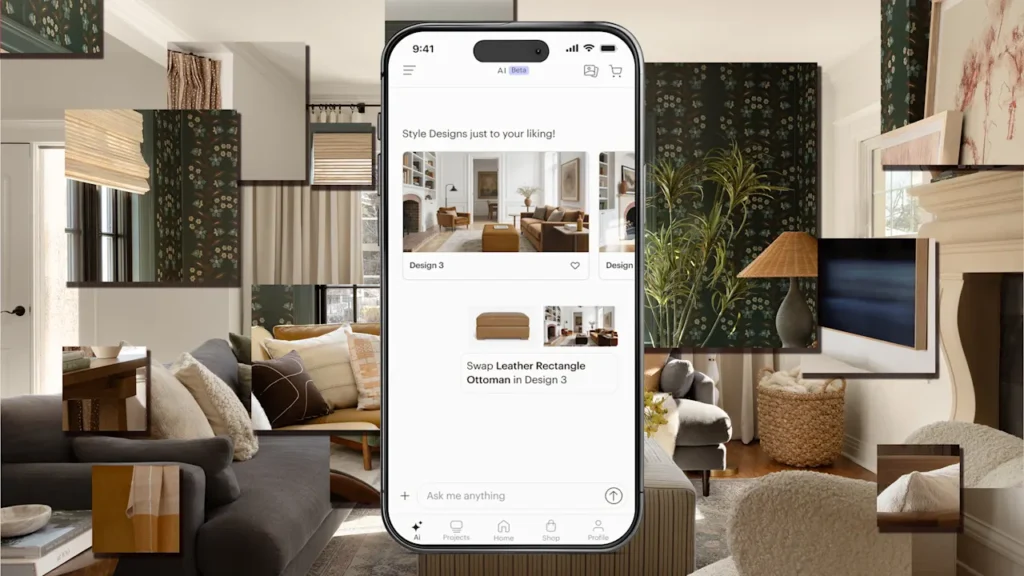
There’s no shortage of inspiration for what to do with a part of the house that’s not quite looking its best. Interior design magazines and furniture blogs are stuffed with idealized bedrooms, and online vision boards make it easy to cast a dragnet over the myriad images of classy lounges or perfectly ordered home offices. But there’s always the unavoidable catch that while these images may be helpful references for how to rethink a room, they don’t actually represent your room.
A new AI tool offers a more personalized alternative. Created by the online interior design service Havenly, it’s an app-based AI design assistant that takes user-submitted images of rooms and instantly offers modifiable design alternatives. Using AI image generation and a chatbot-based conversation about the type of design a user wants, the tool quickly pops out multiple options, with prompts to add or change things. An interactive interface allows users to swap out or even buy actual products and furnishings shown in the design concepts.
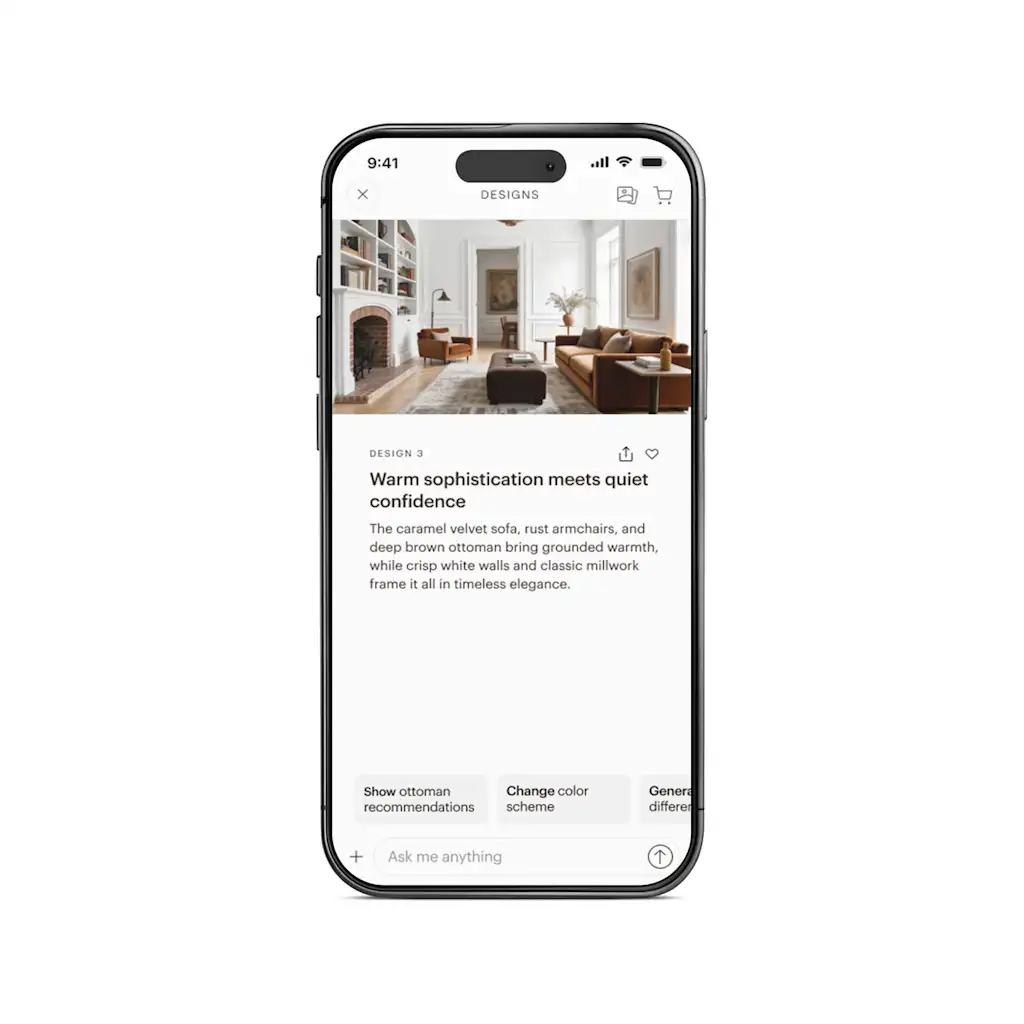
“It’s built on real design,” says Havenly CEO Lee Mayer. She cofounded the company in 2014, and for the past several years Havenly has been collecting its online design work in a broad database that covers more than 2 million individual design decisions and data points. Combining that with the inventories of several furnishings brands Havenly has acquired over the years, the company had the raw training materials for a large language model, the backbone of AI chatbots like ChatGPT.
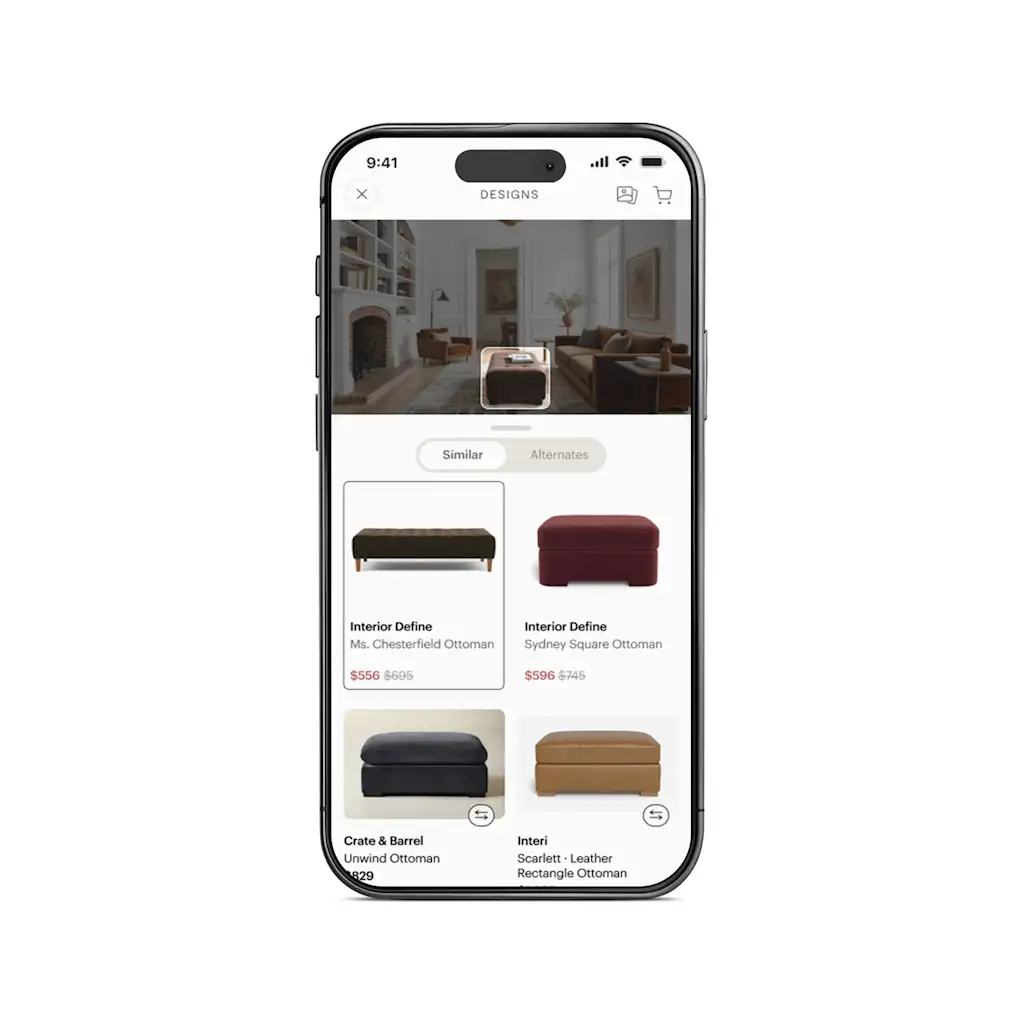
“You’ve got products, you can shop those products, you can say ‘I want to swap this product for that product’ and sort of see that in the space,” Mayer says. “It’s a really great tool to play and tinker and maybe even design your home. It’s not as fully featured and fully figured as a design experience would be, but it’s quite a big step above some of the LLM models that are out there, just in terms of your ability to execute on the design.”
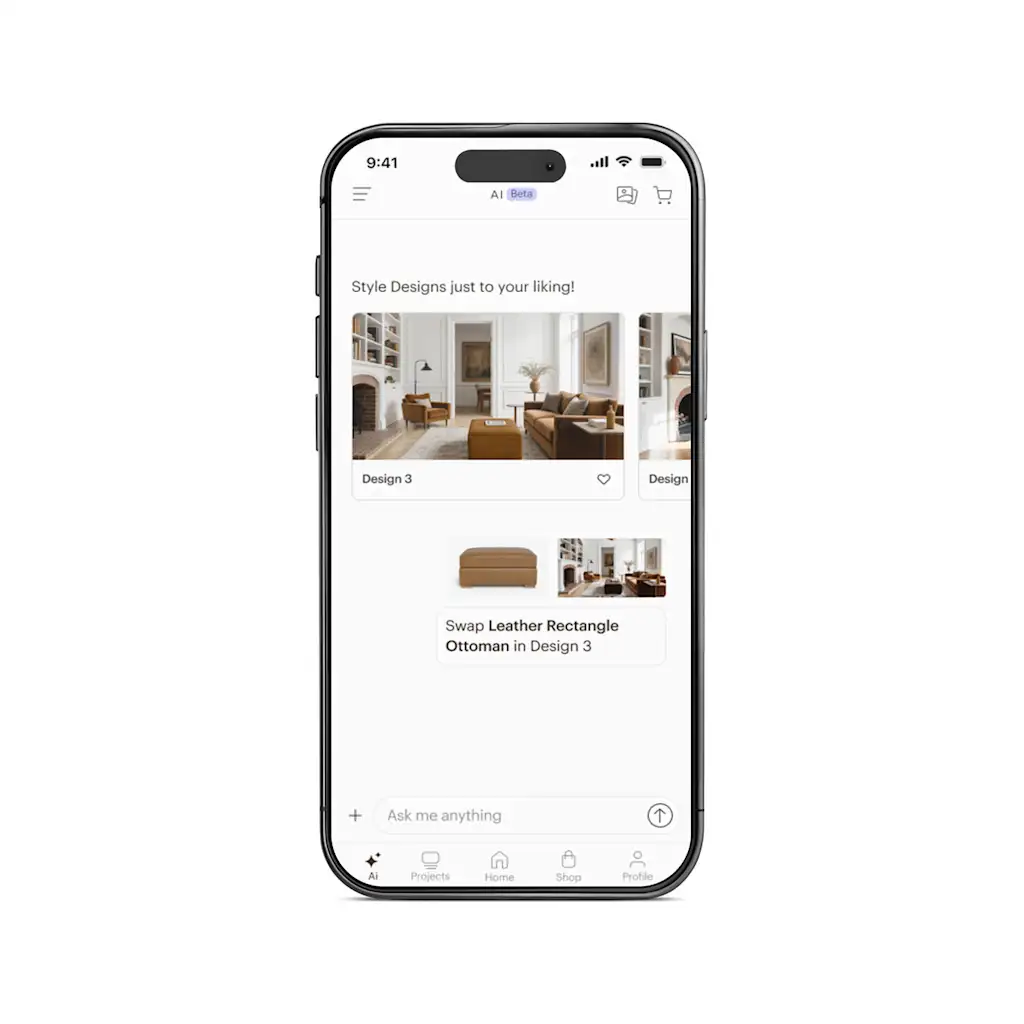
Designing an AI design assistant
The tool was developed almost unintentionally. Havenly, which pairs users virtually with interior designers who offer consultations online, was having trouble keeping up with the demand for human designers. “One of the things we started to do last year was really invest in automation-based tooling for our designers themselves, largely so they could service more people as well and as effectively as they could,” Mayer says.
It was essentially a time saver that lets AI handle the top-line design questions of a project before pulling in a human design expert. As the company was developing the tool for this internal purpose, they started to play with it. “We realized it was kind of fun,” Mayer says. “Why not expose it to the consumer?”
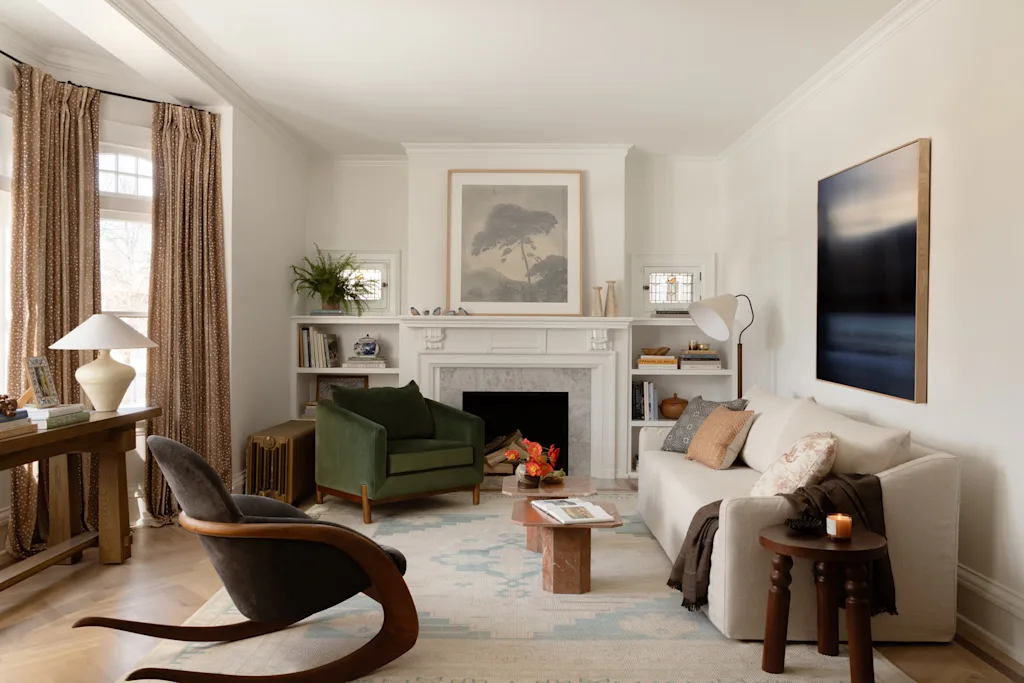
Now available as a beta version on Havenly’s iOS app, the AI design assistant is a free way for users to start to visualize what a redesigned room could become.
Testing out the tool ahead of its official launch, I asked it to offer some ideas for a few places in my own house. Not unlike my experiences with other AI chatbots that have emerged in recent years, the process was sometimes a bit clunky and confused. My first request was for ideas on filling a small space beneath a window in a children’s playroom with either storage, a bench, or a small table.
Apparently caught up by the part of my prompt noting that this was located in a spare bedroom, the tool generated three fully outfitted bedroom designs. When I tried to clarify, the chatbot seemed to understand what I was looking for but then gave me three more bedroom designs.
Switching to a less-specific approach, I uploaded an image of my house’s entryway and asked for suggestions on improving coat and shoe storage. The designs the tool offered were straightforward and useful, and the overall look largely matched the existing entry, albeit with much nicer furnishings. While I’m not likely to spend $600 on the small shoe shelf one design included, it did prompt some thinking about how I could more efficiently manage what can often become a jumble.
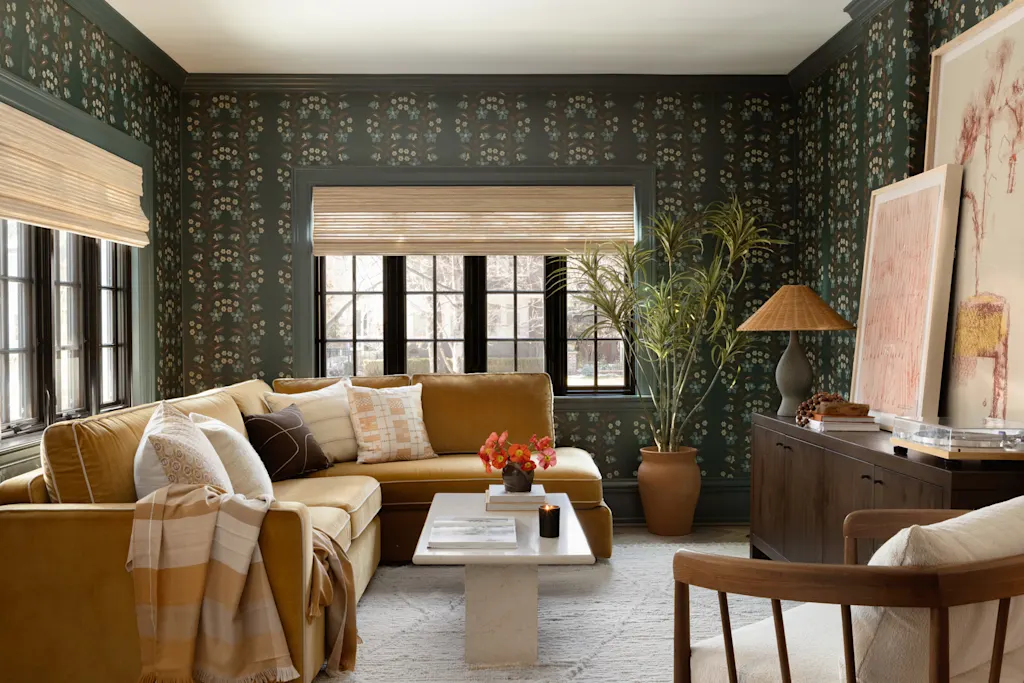
For some users, this could easily become a gateway to buying that shoe shelf (from Havenly) or opting for a paid design service (from Havenly). It could also be a more informed way for people to rethink their space without the information overload of the internet.
“Where we are in the AI wave is just understanding what people want with it and how they interact with it. I think our initial hypothesis is there is a group of people that frankly don’t need full design help,” Mayer says. “Is it perfect? No. Does it replace the designer? I don’t think so.”
But it can help solve problems. Mayer says one of the beta users had more than 200 back-and-forth exchanges with the chatbot to refine ideas for upgrading a basement space.
Even Mayer herself has put the tool to use, asking it to help outfit a guest bedroom on short notice. “I had guests coming within three weeks. I needed to place orders that day. I was like, all right, let’s just see what it comes up with,” she says. After a few minutes chatting with the bot, Mayer got a design that fit the room and furnishings that fit the budget. “I placed the orders,” she says. “I got the rug, the bed, and the bedding.”






